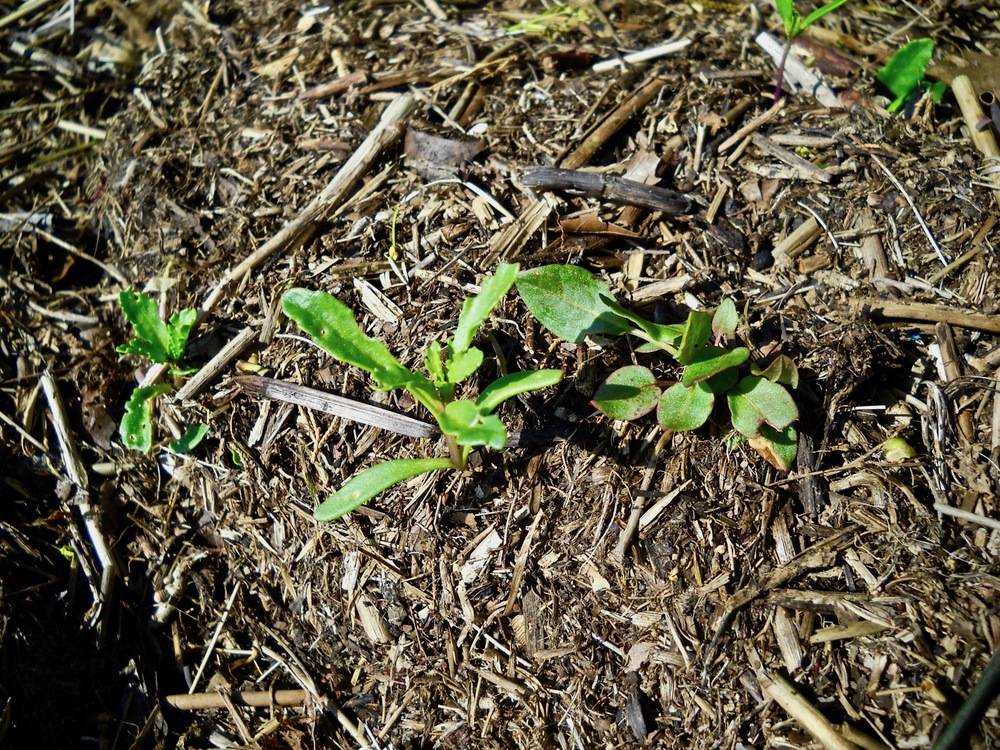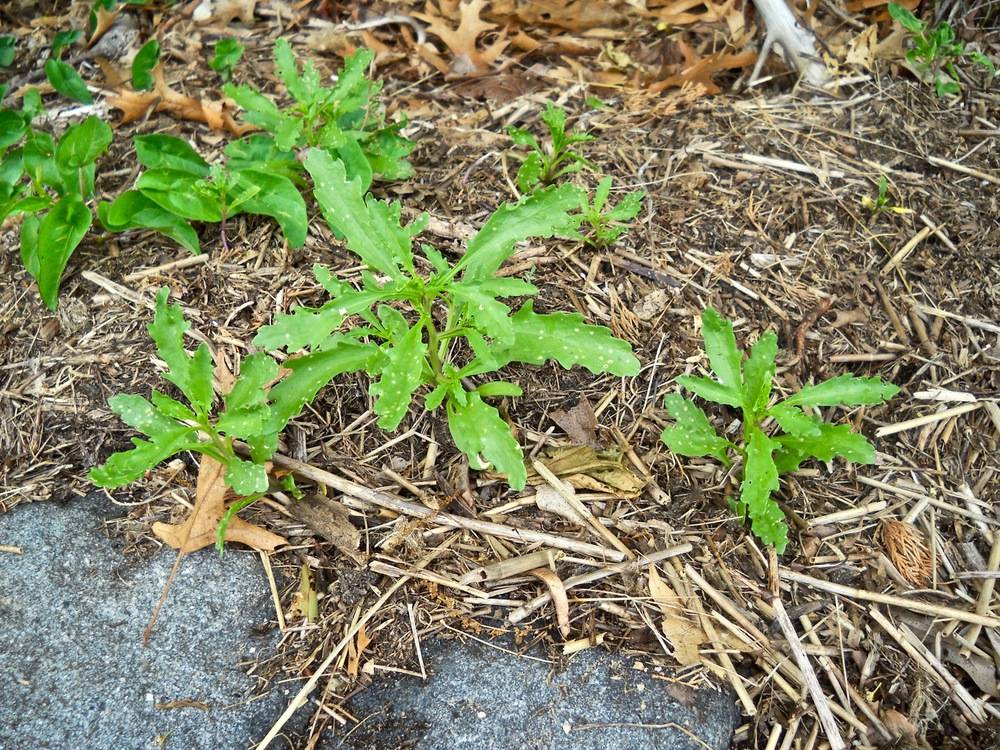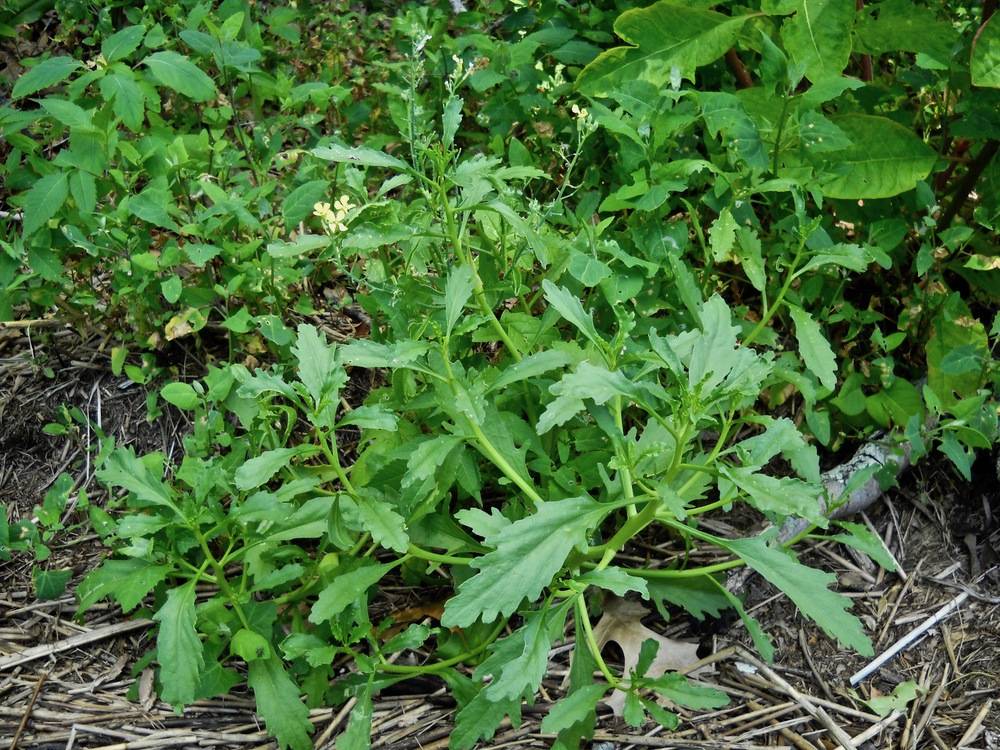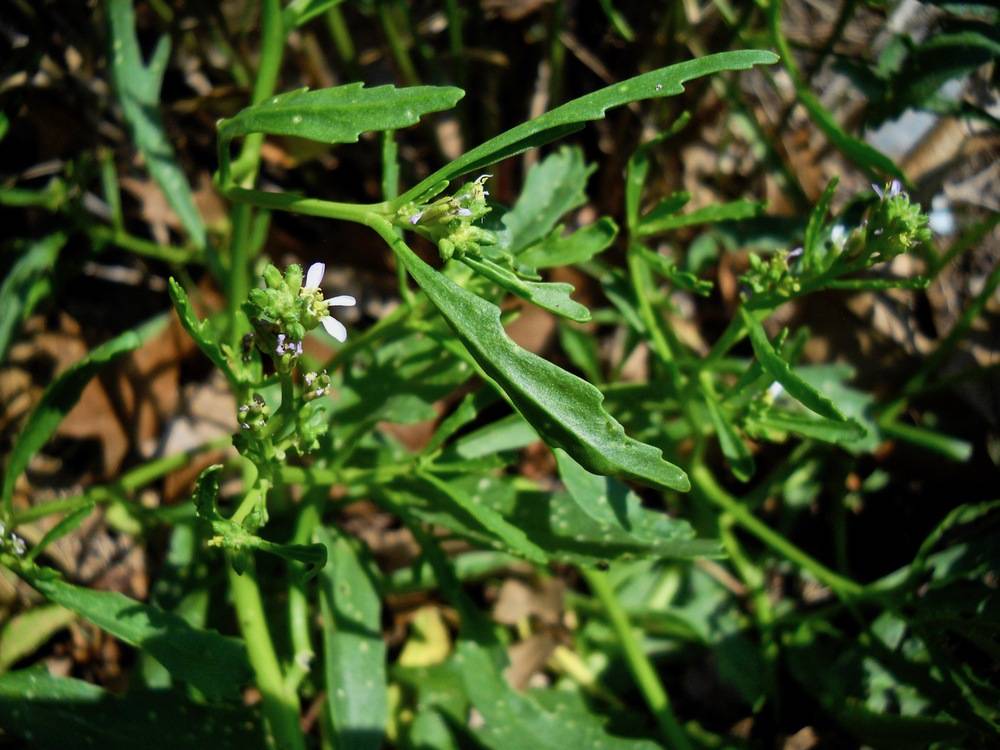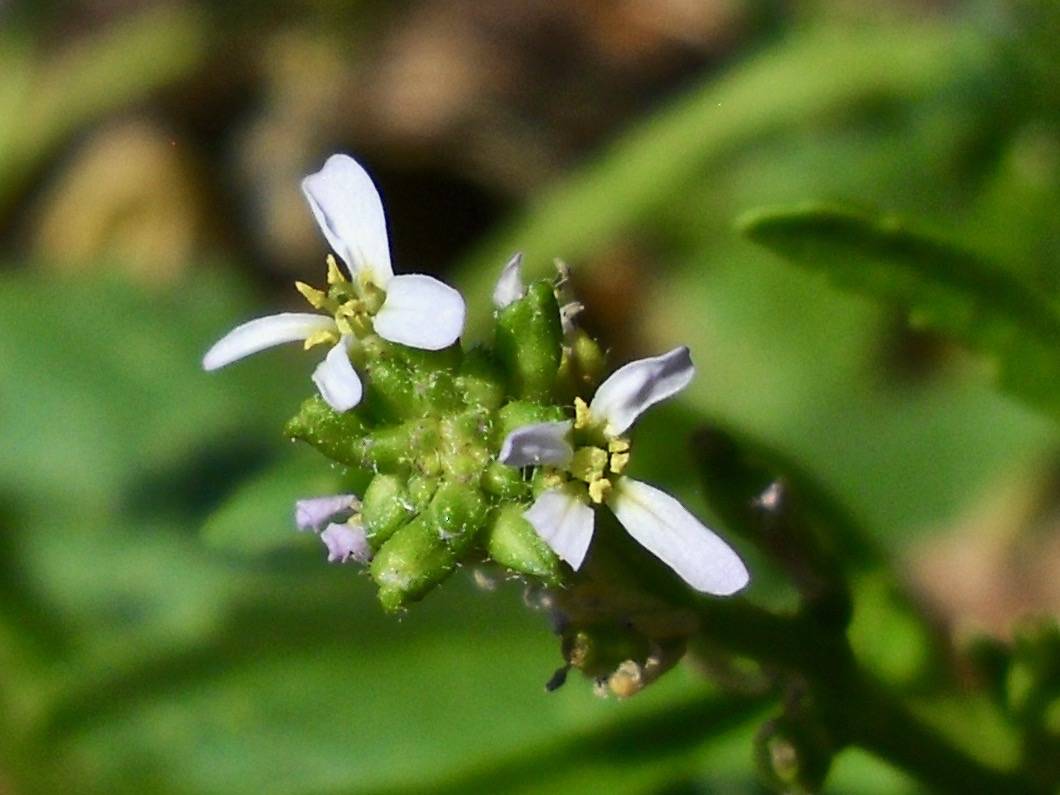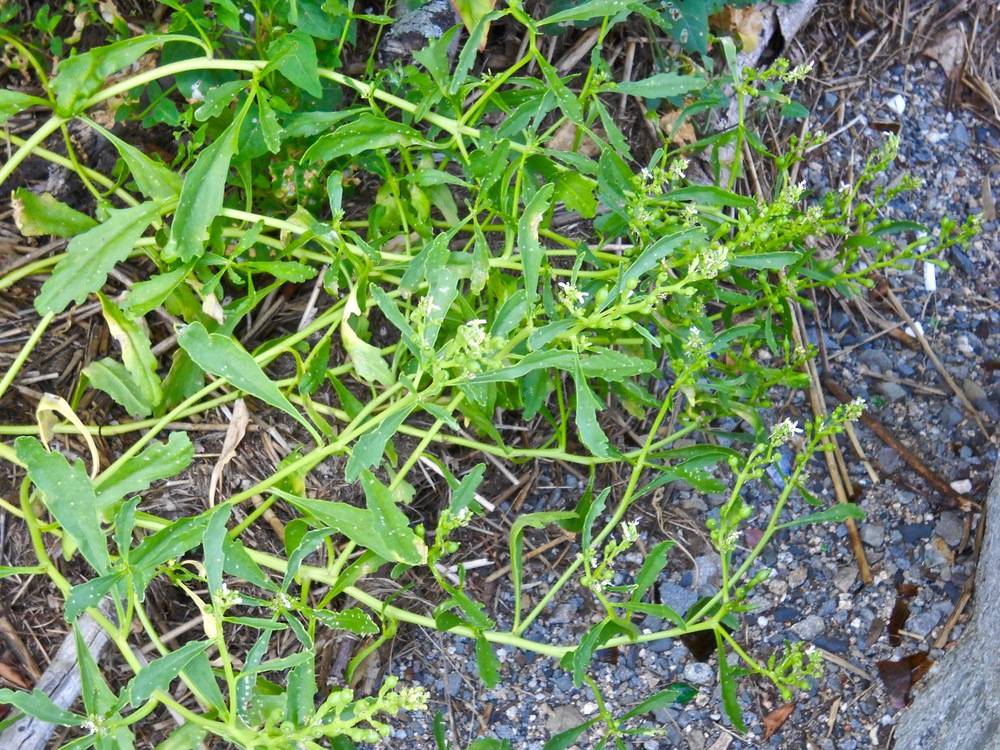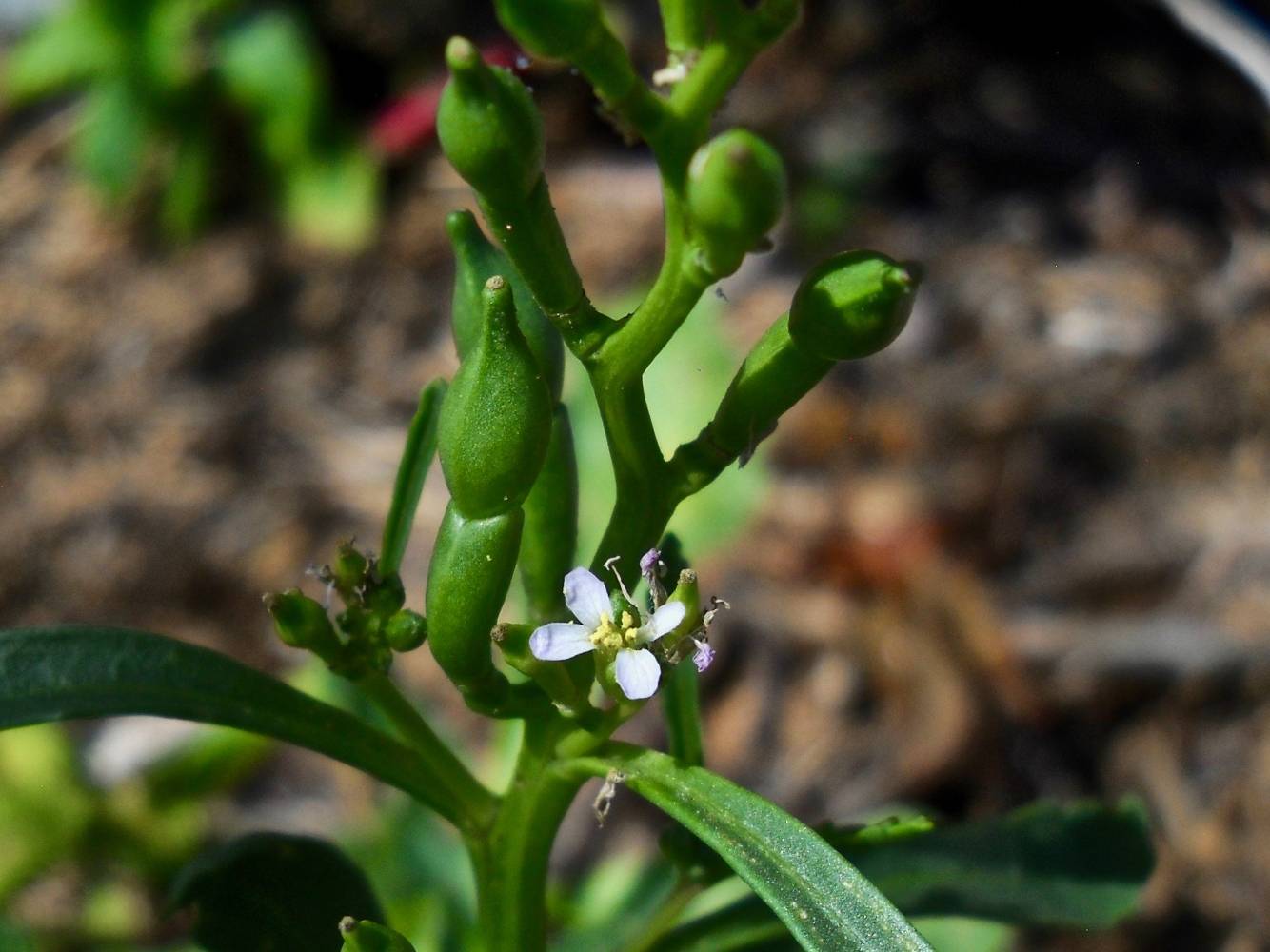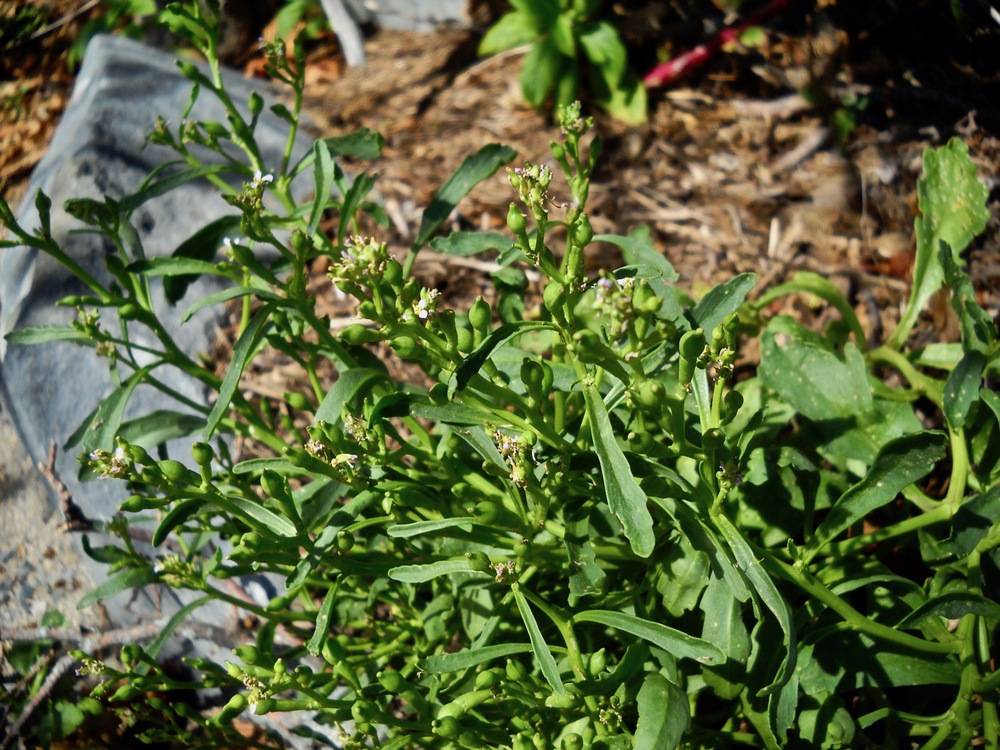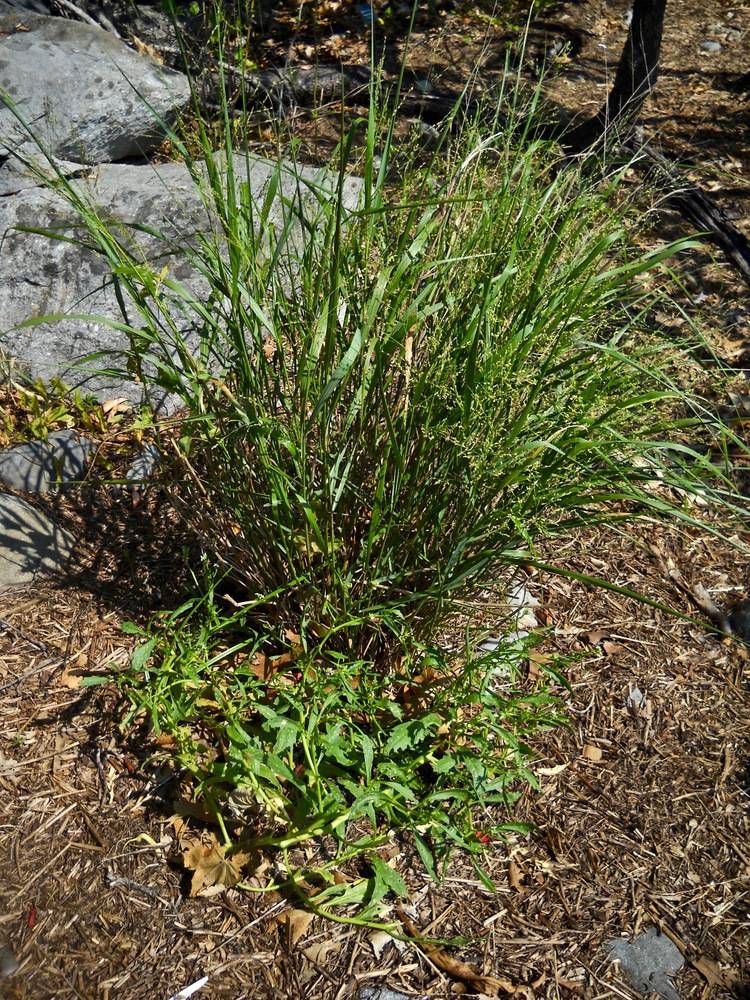American sea-rocket
The American sea rocket is an annual in the mustard family. It is native to the east coast but is naturalized on the west coast of the United States. Unlike the more familiar members of the family (e.g. arugula, broccoli, Brussels sprout, cabbage, cauliflower, kale), it thrives in the arid environment of beaches and dunes under full sun on dry sandy or gravelly soil. It has been introduced to other continents and is considered invasive in Japan and Australia.
At Salter Grove, small unruly clumps of sea-rocket occur on both sides of the high tide line along the Marsh Trail. The elongate succulent leaves and sprawling branches appear able to withstand occasional submersion during exceptionally high tides.
Numerous flowers are produced on each plant over a 2-3 month period. However, they are small and inconspicuous and only a few are opened at a time. In contrast, the two-parted seed pods are readily visible because of their distinctive shape.
As the seed pod matures the upper part breaks off, thus providing the attached seed with the opportunity to float away for germination far from the parent plant. The remaining seed would likely grow near where the parent plant had successfully germinated and reproduced. Indeed, it is usual to find clumps of sea-rocket along the same stretch of the Marsh Trail from year to year. However, individuals occasionally appear in spots where none had grown the previous year.
Like many other mustard greens, the succulent leaves of the sea-rocket are pungent and taste a bit like horseradish. People who forage wild plants for food use the young leaves and shoots in salads or as a potherb.
For more information:
https://gobotany.nativeplanttrust.org/species/cakile/edentula/
https://www.ct-botanical-society.org/Plants/view/80
https://www.illinoiswildflowers.info/prairie/plantx/sea_rocket.html
https://www.centralcoastbiodiversity.org/american-searocket-bull-cakile-edentula.html
https://ucjeps.berkeley.edu/eflora/eflora_display.php?tid=16523
http://www.florafinder.com/Species/Cakile_edentula.php
Richardson, J. (1981). Wild edible plants of New England: A Field Guide: Including Poisonous Plants Often Encountered. DeLorme Pub. Co. pp. 146-147. DeLorme Pub. Co. p. 21.
Seymour, T. (2020). Foraging New England: Edible Wild Food and Medicinal Plants from Maine to the Adirondacks to Long Island Sound. Falcon Guides. pp. 13-14.

